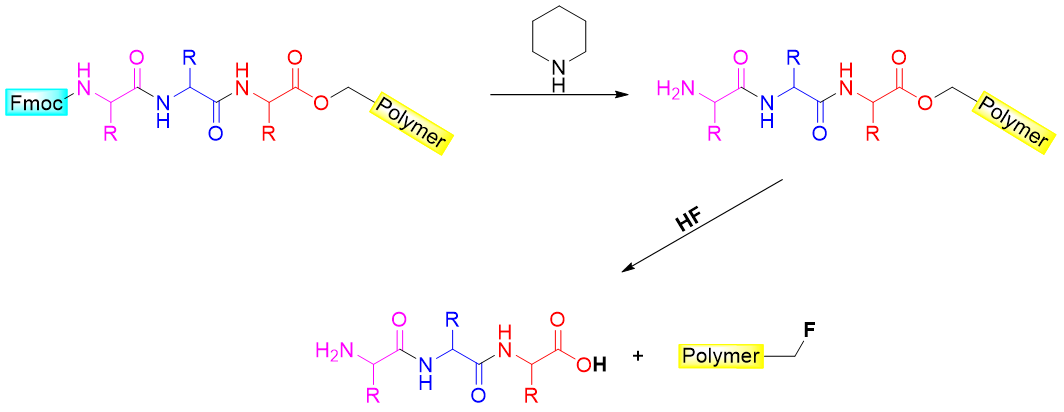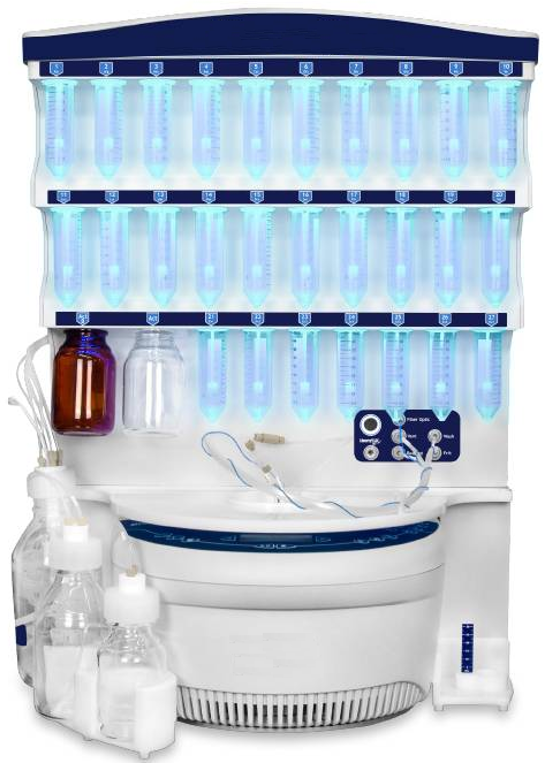Automated Peptide Synthesis
Automated Peptide Synthesis
The method of synthesizing peptides using strategy discussed in the previous article is time consuming as it includes numerous isolation and purification steps and can only be used to make small peptides. The synthesis of larger peptides is accomplished by using the solid state technique. In this technique insoluble polymers are used. The amino acids are added in sequence which results in the formation of a peptide chain. Since, the polymer is insoluble therefore simple washing with appropriate solvent is employed to wash out the byproducts and impurities formed during the reaction. The polymer commonly used is a polystyrene derivative which contains methylene chloride (-CH2-Cl) groups bonded to benzene rings. The incoming amino acids are added to this group.

The -NH2 groups of amino acids are first protected by reacting them with 9-fluorenylmethyl chloroformate.

Next, the protected amino acids are reacted with polymers containing -CH2-Cl groups. In the presence of base, the carboxylate group of amino acids attaches to the polymer via SN2 reaction.

Once the first amino acid is added to the polymer, the remaining amino acids are then added in sequence. Before the next amino acid is added, the amino acid bonded to the polymer is deprotected by reacting it with a mild base like piperidine.

Once the amino acid bonded to polymer is deprotected, next -NH2 protected amino acid is added in the presence of Dicyclohexylcarbodiimide (DCC) coupling reagent. DCC assists the formation of a new amide bond between the two amino acids.

For the addition of further amino acids, step 2 (removal of protecting group) and step 3 (addition of new protected amino acid) are repeated.

Once the desired peptide with specific amino acid sequence is prepared it is treated with base and acid to remove the protecting group and detach the peptide from polymer, respectively.

This solid state method of synthesizing peptide chains is now completely automated. These peptide synthesizers are available in the market for purchase. These instruments can synthesize peptides in an abbreviated time depending upon the length of the peptide chains with excellent yields. These automated peptide synthesizers reduce the research time and costs, and their synthesis scale ranges from milligrams to grams.

An automated peptide synthesizer
